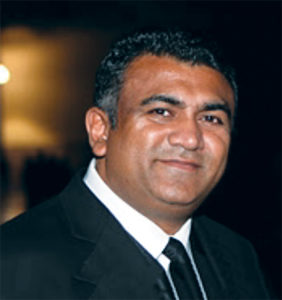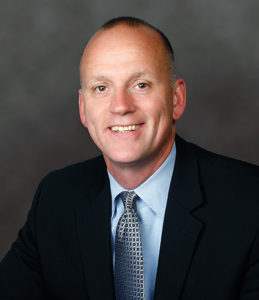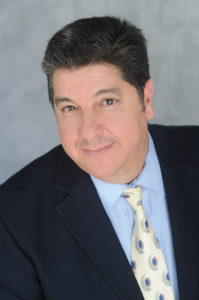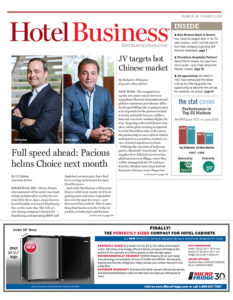NEW YORK—With the lodging universe expanding (new brands, collections) and contracting (M&As) at the same time, more options are being weighed and decisions being made around what hotel play and model will eventually bring the best ROI to an investor.
The industry continues to refresh itself—seemingly every few weeks—with new products, soft brands, membership organizations, mega-chain initiatives, much of it in an effort to attract those looking to make a foray into the space from other businesses, as well as to entice veteran owners and operators looking to pump up their portfolios.
Key to the process is hammering out an agreement and understanding what’s negotiable when addressing franchise and/or membership organization opportunities and what some of the differences are.
Delving into this recently at NABHOOD (see story, page 14), Jay S. Patel, chairman of Florida-based LHS Companies, led a panel of industry experts in examining the topic. Included were Walter Barela, principal, Peak Hospitality LLC; Matthew Hostetler, SVP, franchise sales and development, Red Roof Inn; Mitch Miller, Esq., CEO, Miller Law Group; Michael Morton, VP, owner relations, Best Western Hotels & Resorts; and consultant Sima S. Patel, Esq.
Hostetler noted “newbies” coming to a hotel brand need to understand the Federal Trade Commission regulates franchising, “whether it’s in the burger business or the rooms business. We’re expected to provide anything and everything regarding our business, our organization, its officers, any litigation past or present and the outcome of any of that litigation.”
In addition, the Federal Disclosure Document (FDD) incorporates the performance figures for the prior year, units that were opened and other key data, including a sample franchise agreement. “Most of the way it’s diced and sliced is required by the particular states or the federal government,” said Hostetler. “Once you request that from any organization that franchises, you will have everything from a franchise-agreement perspective already in your document,” he said, advising once received to sign and date it, read and understand it “and have counsel in your process as well.”
As a membership organization, Morton said Best Western is not governed by the same rules and regulations as franchisors. “We are a self-governed, not-for-profit organization,” he said. “The big difference is that for many years, the contracts in the membership were one year and would be renewed every year; since we started to grow, build hotels, get involved in investment with hotels, we’ve expanded where we can now do up to 20-year contracts, depending on the deal,” Morton said.
“Primarily, they’re very simple,” he continued. “We don’t deviate because our rules, regulations and bylaws don’t allow a lot of deviation from the master agreement.”
The executive added that all the fees Best Western charges members are put back into the company. “We don’t have shareholders so we don’t have to worry about growth for the sake of shareholder value or stock price. Everything that is done is voted on. As a member you have one vote for one hotel. So everything is governed by the membership,” Morton said.
Just as with its shift in contract length, Best Western in recent years migrated from a strictly flat-fee-per-room structure to a percentage of GRR. “Ninety-something percent of our members pay that flat fee; only recently, we started having the ability to go out and sell memberships at a percentage of gross rooms revenues. And that was done really to help us grow,” he explained. “Because we are governed, we can’t raise the fees. So, if you’re an existing Best Western, if you do $10 million or $3 million, you still pay that flat fee. And that is not a sustainable model.”
Operator Peak Hospitality’s Barela noted he “likes the model of a membership. There’s a lot of variables within the [franchise]fee; it’s not just the royalty and the marketing fees; it’s also the structure of all the add-on fees (e.g., a technology fee, conference fee). So, it’s not 6.5-7%—it’s more like 14%. Membership is kind of nice in that you can calculate it.”
Moderator Jay Patel noted in years past, franchisees would often be daunted by the 300-plus page document franchisors would send (which are still hefty) and sometimes just sign. “People were signing these things without reading it. Go figure. But they did. Over the years we learned the issues they faced when it came to impact, encroachment, other brands down the road. And people realized: ‘Wow. I didn’t know I signed that.’ So our industry has evolved,” he said, indicating organizations such as AAHOA (Asian American Hotel Owners Association) helped move the needle.
Part of the evolution is the rise of legal counsel specific to hospitality, including those focused on franchise law.
Attorney Sima Patel offered views to both models. “It looks like the membership model has an easier, lower bar to entry. It’s more democratic… You feel more on equal footing. It’s less complicated to understand as well, so probably [fewer]legal fees. On the other hand, because they’ve been around longer and because of some of these asymmetries between the franchisee and franchisor…there is a lot more regulation, you do have more protection and it’s more profit oriented. It is for-profit. It is driven because they don’t make money unless you make money…and [the franchisor]is not just taking your money for the sake of taking it. There is a higher spend on marketing —which matters—because of brand recognition and that flag: people need to know that it exists,” she said.
“The essence of all the fees they charge is to make sure you keep up a certain level of standards,” Patel continued. “Maybe your property is in great condition and doesn’t need the next update, but by forcing everybody else in the system to keep certain standards, that keeps the [consumer]reviews high, the customers happy, TripAdvisor [ratings positive]… That ensures your profits as well because it means that the brand will have a certain insurance of quality.”
While the common wisdom asserts there’s not a lot that’s negotiable within franchise agreements, the attorney averred: “Anything is negotiable. It depends on your location, the party, the relationship, who’s running the deal for you. So many times people do business with people they like. There’re lots of things to evaluate: what the brand is looking for in that particular market, what the competition is doing. Based on that and how you think and what horses you’re willing to trade, I would say there are many more areas that are open for negotiation than is commonly believed.”
Red Roof’s Hostetler also saw the potential for negotiation. “There’s a lot of things that have changed in the franchise world over the past 15 years: being more flexible, understanding you’re actually in it with the franchisee as a partner. If they don’t succeed, [we]don’t succeed. What’s the sense of going to court and blowing all kinds of cash on either side just to protect what you think is right or wrong? Howcver, there are things as a brand we’ve cultivated over 44 years that we want to make sure we protect. It also protects [the franchisee], because if someone else does not play by the rules, it ultimately can affect the franchisee. It goes both ways,” he said.
Attorney Miller noted conversion agreements are “very different” than those for new-builds.
“New-builds have a lot of provisions that are critical to negotiate because if you don’t understand the scheduling of your development and the timing that’s set forth in the proposed franchise agreement…and you don’t meet the deadlines—the agreements do provide for extensions if the franchisor wants to give you the extension—you pay for it,” he said.
“If you [the franchisee]know what is negotiable, you can present 15, 20 items and you’ll probably walk away with movement on somewhere between seven and 12 items,” Miller continued. “If you’re getting movement on more than 50% of the items you’re presenting, then you’re doing well.”
Said Jay Patel: “It’s a two-way street.” HB







